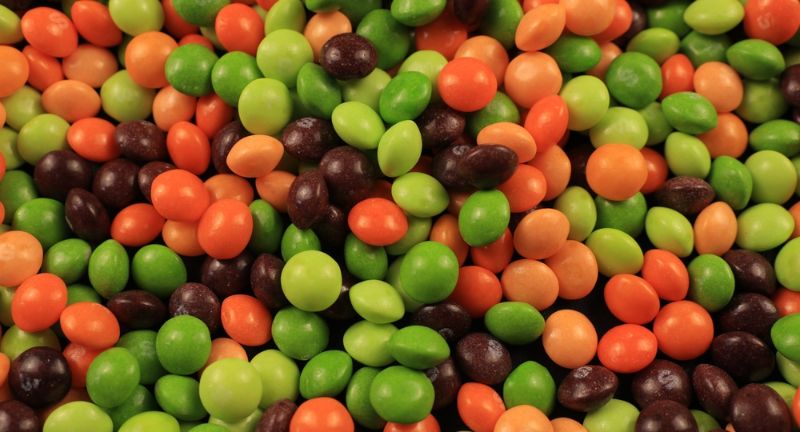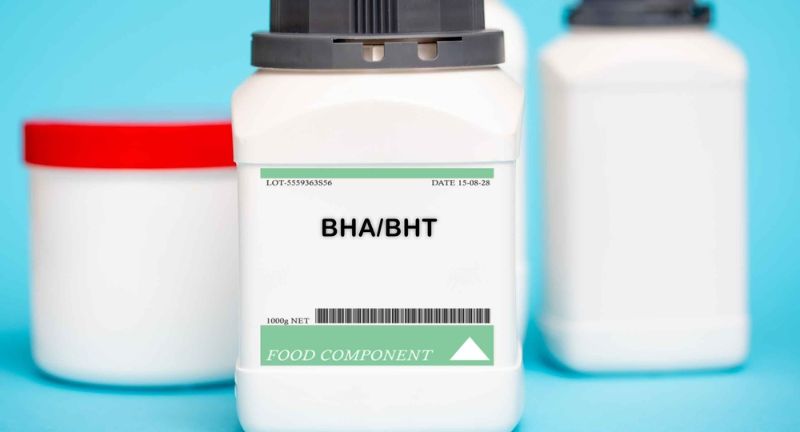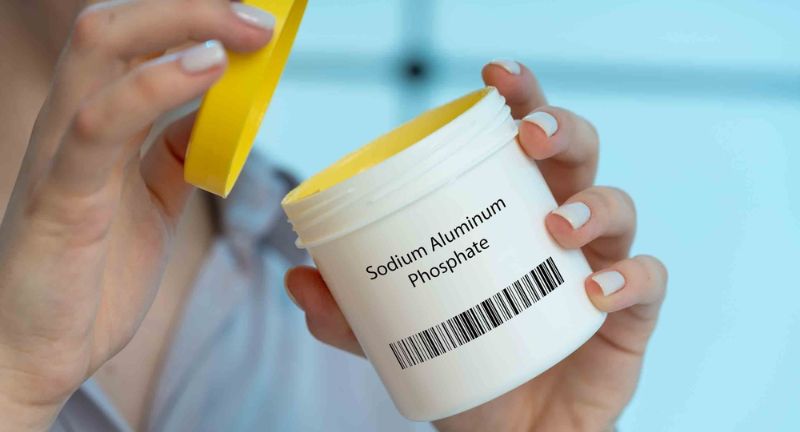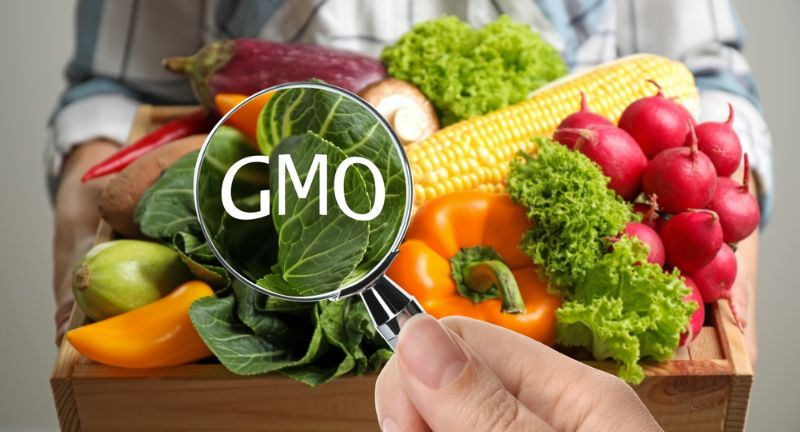NEWS
25 Ingredients That Are Banned In Other Countries Besides The USA
Published
10 months agoon

Shutterstock
The landscape of food safety and ingredient regulation varies significantly from one country to another, reflecting differing priorities, cultural norms, and interpretations of scientific evidence. In the United States, certain food additives and ingredients are permitted that are banned or heavily restricted in other parts of the world, including the European Union and Canada. This discrepancy often raises questions about the safety and health implications of such substances, leading to ongoing debates and calls for regulatory review. Exploring these differences not only highlights the global diversity in food safety practices but also emphasizes the importance of informed consumer choices in a world of varying food laws.
Artificial Food Dyes

Shutterstock
Artificial food dyes such as Red 40, Yellow 5, and Blue 1 are commonly used in the USA to enhance the color of processed foods, candies, and drinks. Despite their widespread use, these dyes are banned or strictly regulated in the European Union due to links to behavioral issues in children, including hyperactivity. In the EU, any product containing these dyes must carry a warning label, which has led many manufacturers to switch to natural colorants. The continued use of these synthetic dyes in American foods raises debates about food safety standards and consumer health.
Acesulfame Potassium

Shutterstock
Acesulfame Potassium, commonly known as Ace-K, is an artificial sweetener found in a wide range of sugar-free and low-calorie products across the United States, from soft drinks to baked goods. Despite its popularity due to its high sweetness level, approximately 200 times sweeter than sugar, and stability when heated, it has faced controversy. In Russia, Acesulfame Potassium is banned from use in beverages and most food products due to concerns over its safety and potential health effects. Studies have raised questions about its impact on insulin levels and links to mood disorders, making its safety profile a subject of ongoing debate in the scientific community.
Brominated Vegetable Oil

Shutterstock
Brominated Vegetable Oil (BVO) is used in some citrus-flavored soft drinks and sports drinks in the United States to help emulsify citrus oils with water. However, BVO has been banned in over 100 countries, including those in the European Union and Japan, because it contains bromine, a component found in flame retardants, which can accumulate in the body and lead to thyroid issues, among other health problems. Despite these concerns, BVO is still permitted in the US under certain conditions, although consumer pressure has led some companies to phase out its use voluntarily. The FDA continues to review the safety of BVO amid ongoing health concerns.
Potassium Bromate

Shutterstock
Potassium Bromate is a chemical additive used in the United States to strengthen dough and improve rise in baked goods. This chemical has been banned in the European Union, Canada, and several other countries due to its potential carcinogenic properties. When bread is properly baked, potassium bromate converts into bromide, which is safe, but any unconverted residue remains a health risk. The continued use of this additive in American bakeries highlights different regulatory standards and concerns regarding consumer exposure to carcinogens.
Azodicarbonamide (ADA)

Shutterstock
Azodicarbonamide (ADA) is commonly used as a dough conditioner and bleaching agent in breads and other baked goods in the USA. It has been banned in Australia, the UK, and the European Union because it can break down into carcinogenic compounds such as urethane during baking. ADA has also been linked to respiratory issues and allergies in workers handling this chemical. The FDA, however, classifies it as safe for use in food at certain levels, which underscores the variability in international food safety standards.
BHA and BHT

Shutterstock
Butylated Hydroxyanisole (BHA) and Butylated Hydroxytoluene (BHT) are synthetic antioxidants used in the US to prevent rancidity in oils and fats in processed foods. Although considered safe by the FDA, these chemicals have been banned or restricted in parts of the European Union and other countries due to potential cancer risks and other health concerns. Studies have shown that BHA and BHT can induce cancer in laboratory animals, leading to debates about their safety in human foods. The discrepancy in regulations highlights different approaches to precautionary measures in food safety.
rBGH (Recombinant Bovine Growth Hormone)

Shutterstock
Recombinant Bovine Growth Hormone (rBGH) is a synthetic hormone used in the United States to increase milk production in dairy cows. This hormone has been banned in the European Union, Canada, and other countries due to concerns about animal welfare and potential health risks to humans, including increased risk of cancer. The FDA maintains that milk from rBGH-treated cows is safe for consumption, citing insufficient evidence to prove health hazards. This ongoing use reflects differing views on animal biotechnology and consumer health between the US and countries with stricter bans.
Arsenic

Shutterstock
Arsenic-based drugs are used in some poultry feeds in the United States to promote growth, improve feed efficiency, and boost color of cooked meat. The use of arsenic in food production is banned in the European Union due to health risks, including cancer and other serious illnesses. In the US, some forms of arsenic have been phased out due to health concerns, but certain uses remain legal under strict regulations. The debate over arsenic in poultry feed underscores the challenges in balancing industry practices with public health.
Butylated Hydroxyanisole (BHA)

Shutterstock
Butylated Hydroxyanisole (BHA) is a synthetic antioxidant used in the United States to prevent rancidity in oils and fats in various processed foods, including snacks and preserved meats. BHA extends shelf life by protecting food against oxidation, which can alter flavors and decrease nutritional value. However, due to concerns about its potential to cause cancer, BHA is banned in infant foods across the European Union and restricted in other food products. Despite these concerns, BHA remains approved for use in food in the U.S., highlighting differing regulatory standards concerning food additives between regions.
Olestra (or Olean)

Shutterstock
Olestra, also known by its brand name Olean, is a fat substitute used in the manufacture of some processed foods in the USA, including chips and french fries. This substance has been banned in the UK and Canada due to its potential to cause gastrointestinal issues, such as diarrhea and abdominal cramps. Olestra can also inhibit the body’s absorption of essential nutrients and vitamins. Despite these concerns, it remains approved for use in the US, where it is valued for its ability to reduce or eliminate fats without sacrificing texture or taste.
Diphenylamine

Shutterstock
Diphenylamine (DPA) is an antioxidant used in the United States to prevent browning in stored apples and pears. While it helps maintain the storage quality and appearance of these fruits, DPA has been banned in the European Union due to health concerns related to its potential breakdown products, which could be carcinogenic. The European Food Safety Authority has stricter regulations regarding pesticide residues, leading to the ban. In contrast, the US maintains that the levels used are safe based on current scientific evidence, allowing its continued use in the food industry.
Propylparaben

Shutterstock
Propylparaben is used as a preservative in various foods, including baked goods, syrups, and jams in the United States. Concerns over its potential endocrine-disrupting effects have led to a ban or restrictions in the European Union, particularly in products for young children. Studies have suggested that parabens can interfere with hormone function, potentially leading to reproductive and developmental issues. Despite these concerns, propylparaben remains approved by the FDA for use in food, underscoring differing regulatory thresholds for chemical safety.
Theobromine

Shutterstock
Theobromine is a bitter alkaloid of the cacao plant found in chocolate, tea, and other foods. While not banned, the use of theobromine is limited in the EU, especially when artificially added to foods like bread and other baked goods. In the US, it is used more liberally in various foods, valued for its mild stimulant effects and its ability to enhance mood. Its regulatory status varies, however, because excessive intake can lead to symptoms similar to caffeine overdose, such as jitteriness and insomnia.
Sodium Aluminum Phosphate

Shutterstock
Sodium Aluminum Phosphate is a chemical used in processed foods and baked goods as a leavening agent in the United States. It helps ensure that baked goods rise correctly during the baking process. However, there are concerns about its safety, as aluminum compounds have been linked to both neurological damage and Alzheimer’s disease. While not banned in the US, there are restrictions and public health debates in the EU about the safety of aluminum compounds, leading to calls for reduced use in food products.
Sodium Nitrate/Nitrite

Shutterstock
Sodium nitrate and sodium nitrite are used in the United States as preservatives and coloring agents in cured meats and other products. These chemicals help prevent the growth of bacteria and maintain the pinkish color of meats. However, they have been linked to an increased risk of cancer, particularly colorectal cancer, when consumed in high amounts. The EU has stricter regulations on the use of these substances in foods, limiting their levels more stringently than in the US, due to health concerns.
Stannous Chloride

Shutterstock
Stannous chloride is used as a color retention agent and antioxidant in canned and bottled foods, helping to maintain color and freshness. In the United States, it is allowed under certain conditions in the food industry. However, due to concerns about its potential effects on human health, such as gastrointestinal disturbances and possible toxic effects, its use is restricted in the European Union. The difference in regulations reflects varying degrees of precaution taken by regulatory bodies to ensure food safety.
Chlorpyrifos

Shutterstock
Chlorpyrifos is a pesticide commonly used on crops, which can also make its way into food products. It has been linked to neurological effects, developmental disorders, and delayed development in children. The European Union has banned chlorpyrifos to protect public health, especially the health of children. However, in the United States, while there have been movements towards banning or restricting its use, chlorpyrifos remains in use under certain conditions, highlighting different regulatory assessments of agricultural chemicals.
Aluminum Additives

Shutterstock
Aluminum additives, such as sodium aluminum phosphate, are used in the United States in food additives, including as coloring and anti-caking agents in processed foods. Concerns over their potential health risks, particularly in relation to neurotoxicity and links to diseases such as Alzheimer’s, have led to tighter regulations and restrictions in the European Union. Despite such concerns, these additives remain approved for use in various food products in the US. This discrepancy points to significant differences in how food safety is approached and regulated across international borders.
High Fructose Corn Syrup

Shutterstock
High Fructose Corn Syrup (HFCS) is a sweetener made from corn starch and is extensively used in the United States in various foods and beverages. Its use has been linked to obesity and diabetes, leading to health concerns over its widespread inclusion in processed foods. While HFCS is not banned in the EU, it is much less common, with stricter regulations that limit its use due to health concerns. The varying levels of HFCS consumption between the US and Europe reflect differing dietary guidelines and public health policies.
Palm Oil

Shutterstock
Palm oil is widely used in the United States in everything from food products to cosmetics. Although not banned, its use is controversial due to environmental concerns, such as deforestation and habitat destruction, which contribute to significant ecological and biodiversity losses. In Europe, there is growing regulation and consumer pressure to limit palm oil use in products, leading to increased demand for sustainable and certified palm oil. The conversation around palm oil is a prime example of how environmental ethics can influence food production and regulation.
Genetically Modified Foods

Shutterstock
Genetically Modified Foods (GMOs) are prevalent in the United States, where they are seen as crucial for agricultural productivity and food security. In contrast, the European Union exercises much more stringent control over GMOs, requiring rigorous safety assessments and labeling, leading to limited use and cultivation. This regulatory approach stems from strong consumer resistance and precautionary principles in food safety. The debate over GMOs underscores broader concerns about food safety, environmental impact, and consumer rights.
Quinoxaline-1,4-dioxides

Shutterstock
Quinoxaline-1,4-dioxides are growth enhancers used in animal feed, particularly in pigs, to promote weight gain and feed efficiency. Their use has been banned in the European Union due to concerns about potential residue in meat and the possible development of antibiotic resistance. However, these substances are still used in the United States, reflecting different regulatory standards and practices. The ongoing use of such growth promoters raises important questions about food safety and animal welfare.
Neotame

Shutterstock
Neotame is an artificial sweetener derived from aspartame, significantly sweeter and used in lower concentrations. Approved for use in food and drinks in the United States, neotame is touted for its high potency without the associated caloric intake of sugar. However, its use is not approved in all food categories in the European Union, where there are stricter controls and skepticism over artificial sweeteners. This difference illustrates ongoing debates and varying safety assessments between regions regarding food additives.
Ethoxyquin

Shutterstock
Ethoxyquin is an antioxidant used to preserve the color and prevent spoilage in spices and certain animal feeds. While it is approved for use in the United States, the European Union has banned ethoxyquin as a food additive due to concerns over its potential health effects, including liver and kidney damage. The use of ethoxyquin highlights the different approaches to food additives and preservatives, reflecting a broader divergence in food safety standards. These regulatory disparities often stem from different interpretations of the available scientific data.
Methylcyclopentadienyl Manganese Tricarbonyl (MMT)

Shutterstock
Methylcyclopentadienyl Manganese Tricarbonyl (MMT) is an additive used in unleaded gasoline to enhance octane and improve engine efficiency. Although not a food ingredient, its use can lead to manganese emissions that have potential health impacts, including neurological effects similar to Parkinson’s disease. MMT’s use in gasoline is banned or restricted in several European countries due to these health concerns, but it continues to be used in the US under certain conditions. The continued use of MMT highlights the challenges of balancing technological benefits against potential health risks.
Conclusion

Shutterstock
The use of certain food additives and ingredients that are banned in other countries but permitted in the United States underscores the complexities and challenges within global food safety and public health. These differences often stem from divergent regulatory philosophies, varying degrees of precaution, and distinct cultural approaches to food and consumption. It is crucial for consumers to remain informed about what they are eating and the potential impacts on their health, advocating for stricter regulations where necessary. As the conversation around food safety continues to evolve, it may lead to a reevaluation of standards and practices to better align with emerging scientific evidence and public health advocacy.
More From Local News X
-


California Floating “Exit Tax” In 2024 To Stop Mass Wealth…
-


Scene Videos from Robb Elementary School Shooting in Uvalde, Texas
-


19 Things Americans Own That Prove They’re Wealthier Than They…
-


Tulsa Hospital Shooting: So Im in my office building in…
-


24 Social Skills That Can Boost Your Likeability
-


The 20 Unhealthiest Foods In The US To Avoid At…
-


22 Strategies for Keeping Your New Year’s Promises
-


Workers Detained After Bulldozing Through Great Wall Of China
-


NYPD Using Drones To Monitor Labor Day Weekend Gatherings, West…
-


20 Traits Of Baby Boomers That Gen Z Has Ditched…
-


21 Important Steps To Take In A Tight Economy
-


Sick and Tired: The 17 Reasons Americans Are Fed Up…
